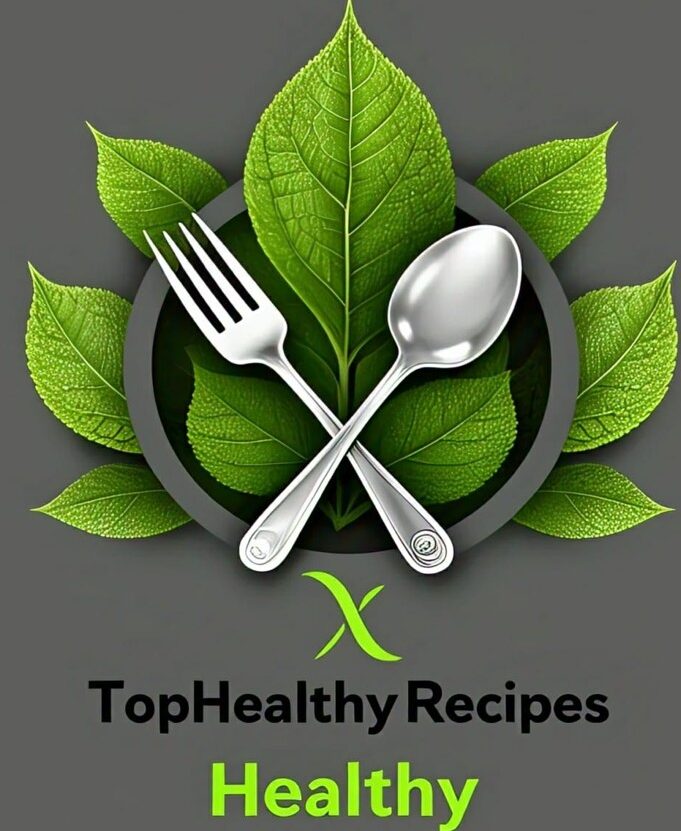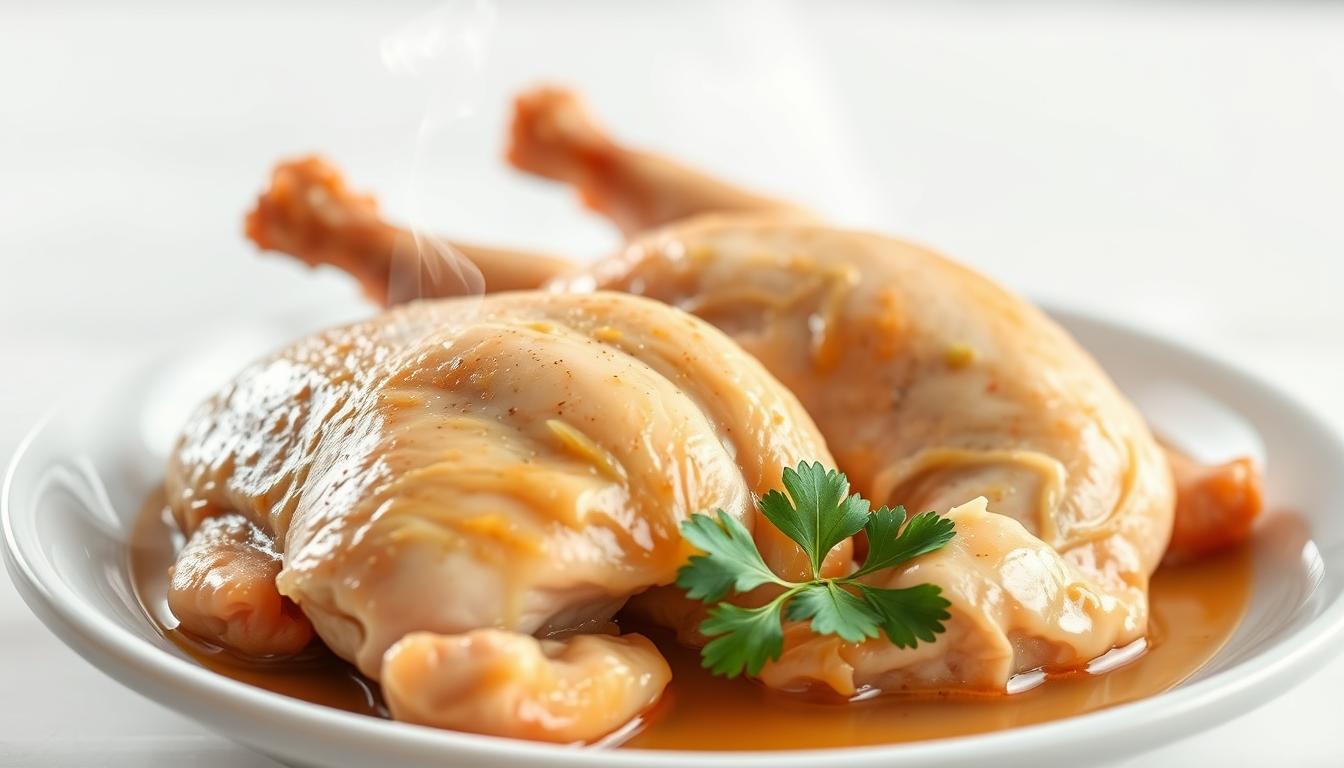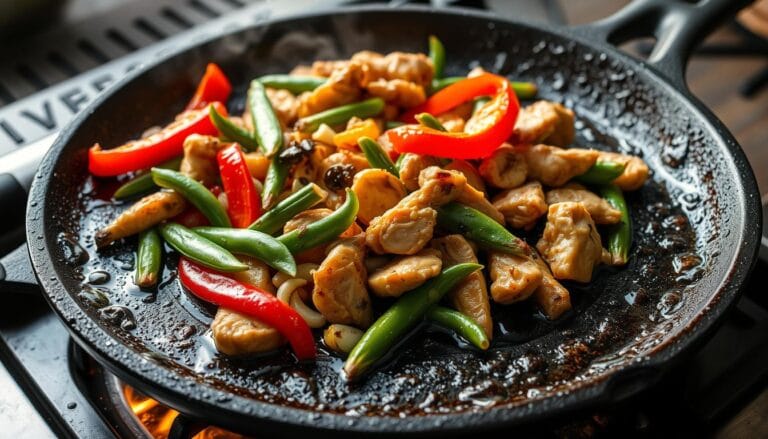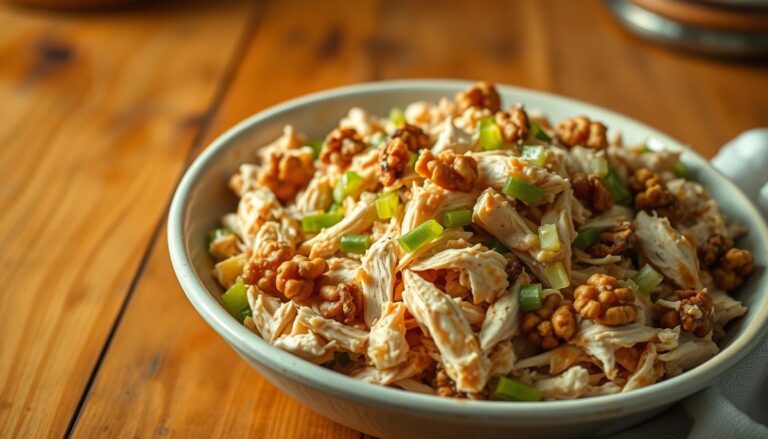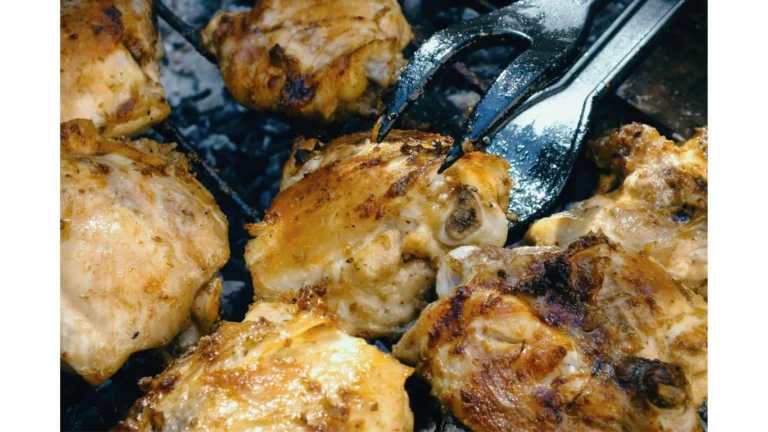How to Boil Chicken: A Step-by-Step Guide for You
Table of Contents
How to Boil Chicken: A Step-by-Step Guide for You
Boiling is one of the simplest yet most effective cooking methods. It requires just a few ingredients—mainly chicken and water—yet delivers tender, juicy results every time. Whether you need protein for salads, soups, or meal prep, this technique ensures perfectly cooked meat without hassle.
Many home cooks love this method because it’s foolproof. Unlike grilling or frying, boiling keeps the meat moist. Plus, the leftover broth can enhance recipes, adding depth to grains or stews. Readers often praise the results as “consistently tender” and “effortless.”
This guide eliminates common mistakes, like rubbery or dry outcomes. Follow the steps below for flawless boiled chicken every time. Let’s get started!
Key Takeaways
- Boiling is a simple, reliable way to cook tender chicken.
- Minimal ingredients—just chicken and water—are needed.
- The leftover broth works well in soups and grains.
- Avoid overcooking to prevent dry or rubbery texture.
- Perfect for meal prep and versatile recipes.
Why Boiling Chicken Is a Game-Changer
Tender, moist results make this cooking method a kitchen essential. Unlike dry-heat techniques, boiling locks in moisture, especially for lean cuts like breasts. The cooking liquid doubles as a light broth, adding flavor to soups or grains.
Benefits of Boiling Chicken
Boiling outperforms roasting or grilling for juiciness. A reader shared, “It’s moist and flavorful every time—no more dry meat!” You also save time: cook once, use the protein in multiple meals.
Health perks stand out too. No added oils mean fewer calories than frying. Plus, the broth infuses dishes like casseroles with extra depth.
Perfect for Meal Prep and Versatile Recipes
Shredded boiled chicken works in BBQ bowls, enchiladas, or pot pies. Batch-cook on Sunday, and you’re set for the week. The broth? Freeze it for future recipes.
- Salads stay fresh with chilled, shredded meat.
- Simmer bones for richer stock.
- Use in tacos, pasta, or stir-fries.
Ingredients Needed for Boiled Chicken
Great meals start with the right ingredients. For tender, flavorful results, you’ll need just a few basics. The beauty of this method lies in its simplicity—no fancy tools or lengthy prep required.
Essential Ingredients
Skinless chicken (breasts or thighs) and water or chicken broth form the foundation. Use a large pot to ensure even cooking. For seasoning, 1 tablespoon of salt per quart of water balances flavors perfectly.
- Chicken: 1–2 pounds, fresh or thawed.
- Liquid: 4 cups water or low-sodium broth.
- Salt: Enhances taste without overpowering.
Optional Flavor Boosters
Elevate your dish with aromatics. Garlic, onions, or bay leaves add depth. For a citrusy twist, try lemon slices or ginger. “A splash of vinegar tenderizes the meat,” notes a home chef.
- Herbs: Rosemary, thyme, or peppercorns.
- Vegetables: Celery or carrots for sweetness.
- Broth tip: Pre-seasoned versions may need less salt.
Step-by-Step Instructions for Boiling Chicken
Precision in timing and temperature ensures juicy, restaurant-quality results at home. Follow these stages to avoid common pitfalls like rubbery texture or uneven cooking.
Preparing the Pot
Arrange skinless pieces in a single layer at the bottom of a large pot. Cover with cold water—this “cold start” method prevents toughness by gently raising the heat.
Bringing the Water to a Boil
Set the stove to medium heat. As foam rises, skim it off for clearer broth. “Skimming ensures a cleaner flavor,” advises chef Laura M. Once bubbling, reduce to a simmer.
Simmering to Perfection
Boneless breasts need just 8–15 minutes. For bone-in cuts, extend time slightly. Keep the lid off to monitor doneness—look for opaque flesh and steady, small bubbles.
| Cut | Simmer Time |
|---|---|
| Boneless Breasts | 8–15 minutes |
| Bone-In Thighs | 15–20 minutes |
Checking for Doneness
Insert a thermometer into the thickest part. Safe internal temperature registers 165°F. Let the meat rest 10 minutes before shredding—this locks in juices.
Different Cuts of Chicken and Cooking Times
Choosing the right cut affects both texture and cooking time. Bone-in pieces simmer longer but yield richer flavor, while boneless options cook faster. Thighs stay juicier due to higher fat content, whereas chicken breasts are leaner.
Boneless vs. Bone-In
Bone-in cuts like thighs or breasts need extra time—about 20 minutes—to cook thoroughly. The bones conduct heat slowly, ensuring tender meat. Boneless thighs, however, finish in just 10 minutes.
Breasts vs. Thighs
Chicken breasts (12–15 minutes) suit quick meals but dry out if overcooked. Thighs (10–15 minutes) remain moist, thanks to marbling. Adjust times for thicker cuts or frozen meat.
- Texture: Breasts are firmer; thighs are richer.
- Weight loss: 12 oz raw breast ≈ 8 oz cooked.
- Broth tip: Simmer bones longer for deeper flavor.
| Cut | Cook Time (Minutes) |
|---|---|
| Boneless Breasts | 12–15 |
| Bone-In Breasts | 18–20 |
| Boneless Thighs | 10–12 |
| Bone-In Thighs | 15–18 |
How to Use Boiled Chicken
Transform your boiled chicken into versatile meals with minimal effort. Whether shredded for tacos or simmered into broth, every part adds value to your cooking.
Shredded Chicken for Salads and Soups
One breast yields about 2 cups of shredded chicken, perfect for quick meals. Use two forks or clean hands to pull the meat apart. “Shredding while warm ensures tenderness,” says chef Marco R.
Try these easy recipes:
- BBQ bowls: Toss with sauce, corn, and avocado.
- Chicken salad: Mix with Greek yogurt, celery, and grapes.
- Enchiladas: Layer with cheese and salsa.
Using the Cooking Liquid (Broth)
The leftover liquid is gold—use it to cook rice or sip as a light soup. For deeper flavor, simmer bones longer. Store in an airtight container for up to 5 days.
Creative broth ideas:
- Freeze into ice cubes for quick seasoning.
- Cook quinoa or lentils for extra protein.
- Deglaze pans for rich sauces.
Common Mistakes to Avoid
Simple errors can turn tender meat into a dry, rubbery disappointment. A few missteps—like rushing the process or cranking up the heat—undo the simplicity of this cooking method. Here’s how to dodge the most frequent blunders.
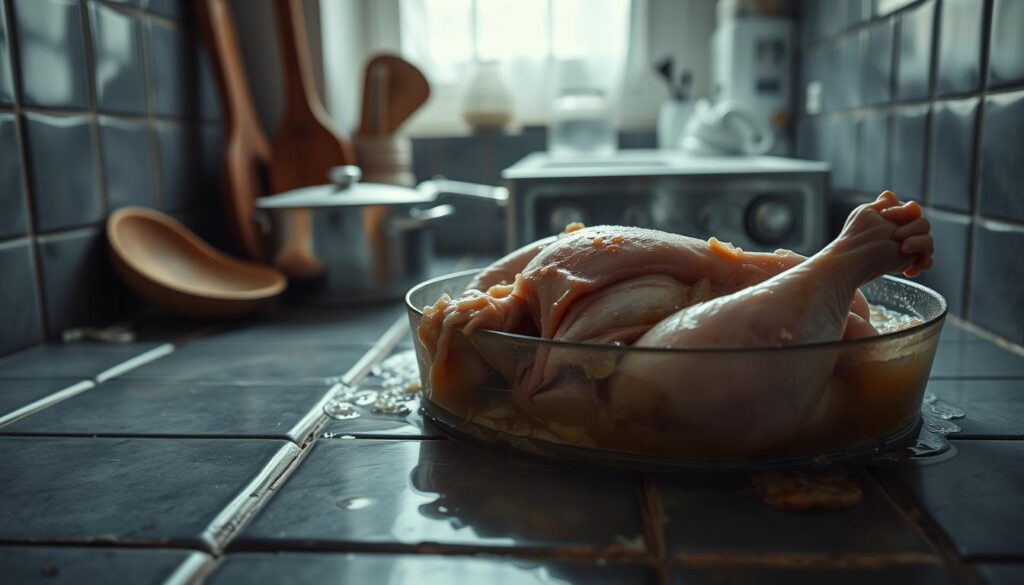
Overboiling the Chicken
Leaving meat in bubbling water too long sucks out moisture. “I used to get rubbery chicken every time,” admits home cook Derek S. Watch for these signs of overboiling:
- Excessive foam: Indicates proteins breaking down.
- Shrinking pieces: Meat contracts when overcooked.
- Stringy texture: Pulls apart unevenly, not in clean shreds.
Starting with Boiling Water
Dropping cold meat into hot liquid causes uneven cooking. The outside toughens before the inside heats through. Instead:
- Use cold water for a gentle temperature rise.
- Skim foam early for clearer broth.
- Simmer, don’t boil: Bubbles should be small and steady.
With these fixes, your next batch will stay tender chicken—never tough or dry.
Storage and Meal Prep Tips
Proper storage keeps your cooked chicken fresh and ready for quick meals. Whether refrigerating or freezing, a few simple steps maintain flavor and texture. Follow these guidelines to avoid waste and streamline your cooking routine.
Refrigerating Cooked Chicken
Cool the meat to room temperature before storing. Transfer it to an airtight container or resealable bag. Properly refrigerated, it lasts up to 5 days—ideal for salads or wraps.
For best results:
- Portion into recipe-ready amounts (e.g., 2 cups for soups).
- Label with dates to track freshness.
- Keep broth separate to prevent sogginess.
Freezing for Later Use
Shredded chicken freezes well for up to 3 months. Pre-shred before freezing to save time. “I freeze flat bags for faster thawing,” shares meal-prep enthusiast Tara K.
Key tips:
- Use freezer-safe bags, squeezing out excess air.
- Thaw overnight in the fridge or a cold water bath.
- Add frozen pieces directly to simmering soups.
| Storage Method | Duration | Best For |
|---|---|---|
| Refrigeration | 5 days | Quick meals, salads |
| Freezing | 3 months | Soups, casseroles |
Variations and Flavor Ideas
Elevate your dish with bold or subtle flavors—herbs and spices transform plain meat into a culinary delight. Whether you crave earthy rosemary or fiery jalapeños, these tweaks suit any cuisine.
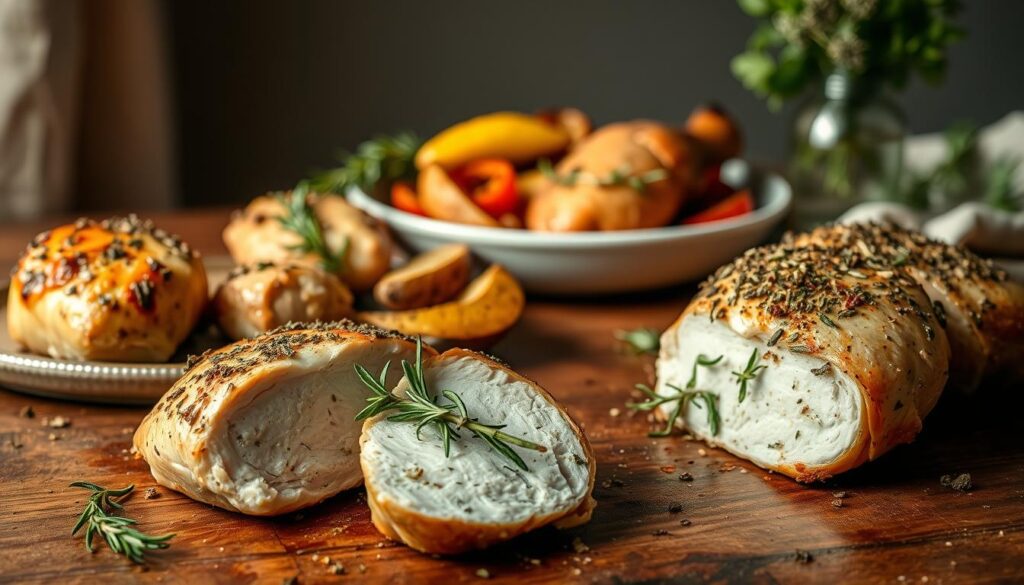
Herb-Infused Chicken
Fresh herbs add brightness without overpowering. Try these combos:
- Garlic and thyme for a classic touch.
- Onions and sage for savory depth.
- Rosemary and lemon zest for Mediterranean flair.
“A bay leaf in the pot makes all the difference,” notes chef Elena K.
Spicy or Citrusy Twists
Balance heat and acidity for vibrant results. Higher-fat cuts like thighs handle bold flavors best:
- Asian: Ginger, soy sauce, and star anise.
- Mexican: Lime, cumin, and jalapeños.
- Caribbean: Orange slices and allspice.
| Flavor Profile | Best For |
|---|---|
| Herb-Infused | Salads, pasta |
| Spicy | Tacos, stir-fries |
| Citrusy | Grain bowls, soups |
Conclusion
Mastering this cooking method unlocks endless possibilities in your kitchen. With minimal effort, you get tender chicken perfect for salads, soups, or wraps. The simplicity makes it a go-to way to prep protein for busy weeks.
Experiment with herbs, spices, or citrus to customize flavors. Don’t toss the broth—use it to elevate grains or stews. Meal prep becomes effortless when you batch-cook and store properly.
Ready to upgrade your food routine? Try this technique tonight and enjoy juicy, versatile results. Whether for recipes or quick meals, it’s a game-changer.
FAQ
What are the benefits of boiling chicken?
Should I use bone-in or boneless chicken?
How do I know when the chicken is fully cooked?
Can I add seasonings to the water?
How long does boiled chicken last in the fridge?
What’s the best way to shred boiled chicken?
Can I reuse the cooking liquid?
Why is my boiled chicken tough?
For more cooking tips, stay connected with us. We also recommend the cookbook Skinnytaste Simple: Easy, Healthy Recipes with 7 Ingredients or Fewer
For more Recipes about Chicken
